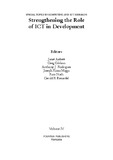| dc.description.abstract | Collaborative filtering is a method of making predictions about the interests of a
user based on interest similarity to other users and consequently recommending
the predicted items. There is a widespread use of collaborative filtering systems in
commercial websites, such as Amazon.com, which has popularized item-based
methods. There are also many music and video sites such as iLike and Everyone’s a
Critic (EaC) that implement collaborative filtering systems. This trend is growing
in product-based sites. This paper discusses the implementation of graph-based semisupervised
learning methods and memory-based methods to the collaborative filtering
scenario and compares these methods to baseline methods such as techniques based
on weighted average. This work compares the predictive accuracy of these methods
on the MovieLens data set. The metrics used for evaluation measure the accuracy
of generated predictions based on already known, held-out ratings that constitute
the test set. Preliminary results indicate that graph-based semi-supervised learning
methods perform better than baseline methods. However, some of the memory-based
methods outperform the graph-based semi-supervised learning methods as well as the
baseline methods. | en |

